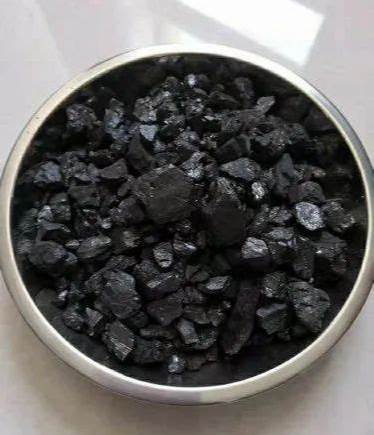
Electrically calcined carbon is the key ingredient used in producing carbon fiber. A raw material highly processed, it yields high-quality refractory char with low ash, high resistance to corrosion, and high strength. A high-temperature electric calciner is used to produce this material. This material comes in different grades depending upon the use and is known to have excellent properties like high thermal conductivity.
It involves the heating of raw anthracite for a specified time in a DC electrical calciner to remove volatiles and impurities. This is an important step of the graphitization procedure, as it converts raw amorphous coal to crystalline carbon. Amorphous carbon, at 3°C/hour in high-temperature ovens is transformed into crystalline graphite. Carbon fibers are affected by the thermal and electric properties of amorphous or crystalline graphite.
Calcinating anthracite increases its carbon content and makes it compatible with the other raw materials that are used to produce carbon fibers. In emerging economies in particular, the increasing demand for iron, steel, and other metals has led to growth on the anthracite calcined markets. Furthermore, stringent environmental regulations and norms imposed by governments worldwide have fueled the demand for calcined anthracite as an environmentally friendly carbon additive in steel and iron production.

Anthracite, a dark brown or black colored coal with a very high level of heat generated during combustion and low sulfur content. Its low ash content and chemical resistance to molten salts make it an ideal raw material for the production of carbon fibers. It is necessary to calcine the anthracite at temperatures above 1500 deg C before using it in the production of carbon fibres.
The amorphous anthracite carbon can be converted to crystalline graphite by subjecting it to the proper conditions in a high-temperature reactor. The atomic structure of the anthracite carbon is perfect for the formation of nanoparticles. They are then added to the carbon fibres which can enhance their stiffness and strength.
Compared to conventional carbon materials, the tensile and compressive strengths of anthracite-based CFs are significantly higher and exceed those of high-alloy steel. In addition, they have a lower specific gravity and better thermal conductivity than steel and other metals. The anthracite base makes anthracite-based composites ideal for automotive, construction and manufacturing applications. Anthracite based CFs also have the ability to replace materials such as other high-performance engine parts. It is also good for our environment because it will result in reduced emissions and consumption of fuel. The anthracite versions of CCs also have the advantage of being more cost-effective than their counterparts made from steel. Because anthracite consumes less energy, it is cheaper than the steel counterparts.

Write a Message